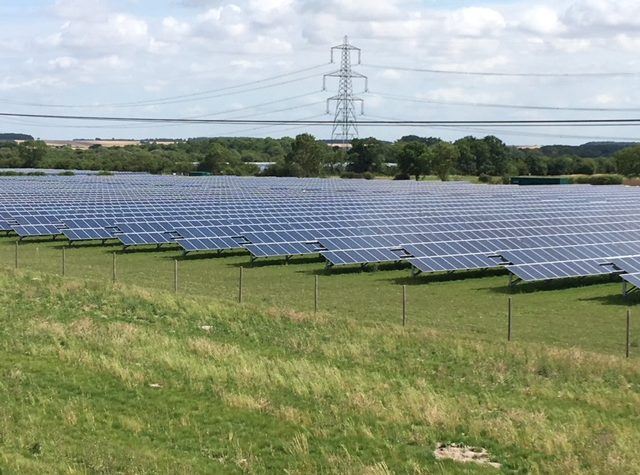Back in July last year we launched the National Infrastructure Assessment, the first of its kind in this country and of its scope anywhere in the world. It identifies clear priorities for the UK’s economic infrastructure over the coming years and decades, based on a thirty-year forward look at the changing shape of our economy and society and at the potential impacts of environmental and technological change.
One of our key findings for energy was that the costs of future low carbon electricity systems look broadly the same, whether the majority of electricity comes from nuclear power or from renewables. Historical evidence suggests the costs for renewables are falling quicker than expected whereas nuclear costs are not falling at all. Given the projected costs, and the potential for development in supporting technologies and smart systems, we’ve recommended that government should pursue a generation mix with a high proportion of renewables, while keeping all options open by adopting a one by one approach for new nuclear power plants.
Today, we release a report that we commissioned from the Met Office, looking at the current scientific understanding of the weather and climate-related risks in a highly renewable electricity system. We wanted to know where knowledge gaps still remain, and where there may be unexplored opportunities to build resilience into a highly renewable electricity mix.
The recent net zero report by the Committee on Climate Change, and the government’s legislative change committing to net zero emissions by 2050, adds fresh impetus to the recommendations the Commission made in the Assessment. There is no longer anywhere to hide. Although it is too early to say what level of supporting baseload power (such as nuclear) may represent best value for money, it is clear that renewables will need to form a much more significant part of the generation mix than they do today. Our recommendations to bring forward more renewables include opening up the Contracts for Difference auctions to allow onshore wind and solar to compete fairly with offshore wind. This would provide the framework for the cheapest mix of renewable technologies to come forward through competitive auction.
But this also means it is time to start thinking critically about how a highly renewable electricity system would perform in practice in the UK. Today’s report shows that there will be challenges associated with future weather and climate variations, and that there are some areas where further research will be invaluable. But it also shows that there is significant scope to build resilience through intelligent deployment of a mix of renewables working alongside sources of flexibility such as storage, interconnectors with other countries, and demand side response.
It identifies how weather-based stress events on the system can be characterised in five ways:
- Two types of events where demand would outstrip supply: high demand during winter accompanied by lower than normal wind; or a summer time wind drought, where though demand may be relatively low, renewable wind supply is reduced for an extended period.
- One where supply would outstrip demand through combined high levels of solar and wind generation in summer leading to excess generation beyond demand.
- And two events where rapid changes over a short period of time could put pressure on the networks through either short term ramping up of wind in the winter, or solar generation in the summer.
The report identifies the forecasting tools which could enable us to predict and prepare for these events, and also how we could make use of insights into the known variability of weather patterns across time and space. For instance:
- the opposing weather conditions found between northern and southern Europe during stress events underlining the key role interconnection could play;
- the anti-correlation identified between wind speed and solar irradiance showing how wind and solar technologies could complement each other in a generation mix; and
- the spatial variation of weather patterns across the country further illustrating the potential benefits of a diverse mix of renewables deployed across the country.
It also highlights gaps in the way we tend to model the energy system, which in general does not properly capture both the full variability of weather and climate, and the significant role for technologies which can help manage the supply and demand of electricity.
The actual performance of the future system, and the exact level of renewables that will be optimal, will depend not only on how we can predict and manage potential extreme weather stress events, but on a variety of factors including how costs continue to fall for renewables and their supporting technologies and how alternative flexibility solutions such as inter-seasonal storage through hydrogen develop.
But we hope that through releasing this report, we can start to move into the next phase of the discussion around how to best make sure we are ready for the challenges and the opportunities that an increasingly renewable electricity system will bring.
Pete Burnill is the Senior Policy Adviser on energy at the National Infrastructure Commission




